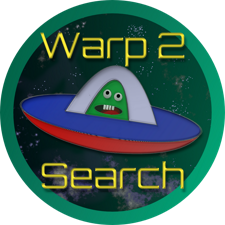Tails 7.0 has been officially released, building on the foundation of Debian 13 (Trixie) and featuring the updated GNOME desktop environment, GNOME 48 (Bengaluru). This release marks a significant upgrade with various enhancements, including major updates to applications like Tor Browser, Thunderbird, Electrum, and GIMP. The overall user experience has been improved with redesigned settings and enhanced accessibility features. Notably, Tails 7.0 requires a minimum of 3 GB of RAM for optimal performance, and users will be notified if their system does not meet this specification.
One of the standout improvements in this version is the reduced startup time, which is achieved by switching from the xz to zstd compression algorithm for Tails USB and ISO images. Users can expect the operating system to launch approximately 10–15 seconds faster on most computers, although this change results in a 10% increase in image size. It is advisable for users to utilize high-quality USB sticks for better performance, as lower-quality devices may slow down startup further.
Tails 7.0 also introduces a number of significant updates to the software included in the distribution:
- GNOME Terminal has been replaced by the newer GNOME Console.
- GNOME Image Viewer has been updated to GNOME Loupe.
- The Tor Browser and its client have been updated to versions 14.5.7 and 0.4.8.17, respectively.
- Thunderbird has been upgraded to version 128.14.0esr, while other applications like Electrum (4.5.8), OnionShare (2.6.3), KeePassXC (2.7.10), and GIMP (3.0.4) have also received updates to their latest versions.
The GNOME desktop environment enhancements include redesigned Accessibility, Sound, and Mouse & Keyboard sections, along with new features such as Overamplication and Always Show Scrollbars. A dynamic workspace indicator has replaced the Activities button, and improved Screen Reader functionalities have been introduced.
Several applications and features have been removed in this version, including the Places menu, Kleopatra from the Favorites menu, and others like aircrack-ng and the Power Statistics utility. However, users can still access these functionalities through alternative means.
Additionally, Tails 7.0 features an updated Linux kernel (version 6.12.43), which enhances hardware support for newer components such as graphics cards and Wi-Fi adapters. To upgrade to Tails 7.0, users with previous release candidates can perform automatic upgrades, while others will need to follow a manual upgrade process, which will result in the loss of Persistent Storage on the USB stick if they opt for a fresh install.
For users looking to install Tails 7.0 on a new USB stick or to download the update directly, detailed installation instructions are provided for various operating systems, ensuring ease of access and usability for all users.
In summary, Tails 7.0 represents a robust advancement in user experience, security, and functionality, reaffirming its commitment to providing a secure computing environment focused on anonymity
One of the standout improvements in this version is the reduced startup time, which is achieved by switching from the xz to zstd compression algorithm for Tails USB and ISO images. Users can expect the operating system to launch approximately 10–15 seconds faster on most computers, although this change results in a 10% increase in image size. It is advisable for users to utilize high-quality USB sticks for better performance, as lower-quality devices may slow down startup further.
Tails 7.0 also introduces a number of significant updates to the software included in the distribution:
- GNOME Terminal has been replaced by the newer GNOME Console.
- GNOME Image Viewer has been updated to GNOME Loupe.
- The Tor Browser and its client have been updated to versions 14.5.7 and 0.4.8.17, respectively.
- Thunderbird has been upgraded to version 128.14.0esr, while other applications like Electrum (4.5.8), OnionShare (2.6.3), KeePassXC (2.7.10), and GIMP (3.0.4) have also received updates to their latest versions.
The GNOME desktop environment enhancements include redesigned Accessibility, Sound, and Mouse & Keyboard sections, along with new features such as Overamplication and Always Show Scrollbars. A dynamic workspace indicator has replaced the Activities button, and improved Screen Reader functionalities have been introduced.
Several applications and features have been removed in this version, including the Places menu, Kleopatra from the Favorites menu, and others like aircrack-ng and the Power Statistics utility. However, users can still access these functionalities through alternative means.
Additionally, Tails 7.0 features an updated Linux kernel (version 6.12.43), which enhances hardware support for newer components such as graphics cards and Wi-Fi adapters. To upgrade to Tails 7.0, users with previous release candidates can perform automatic upgrades, while others will need to follow a manual upgrade process, which will result in the loss of Persistent Storage on the USB stick if they opt for a fresh install.
For users looking to install Tails 7.0 on a new USB stick or to download the update directly, detailed installation instructions are provided for various operating systems, ensuring ease of access and usability for all users.
In summary, Tails 7.0 represents a robust advancement in user experience, security, and functionality, reaffirming its commitment to providing a secure computing environment focused on anonymity
Tails 7.0 released
Tails 7.0 has been released, built upon Debian 13 (Trixie) and featuring an updated GNOME desktop environment with GNOME 48 (Bengaluru). The new version includes significant updates to various applications, such as Tor Browser, Thunderbird, Electrum, and GIMP, while also improving the overall user experience with redesigned settings and accessibility features. Additionally, Tails 7.0 requires at least 3 GB of RAM to function smoothly, displaying a notification when the recommended specifications are not met.

